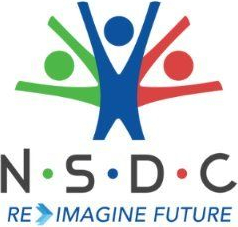Quantum Technology Caught Between Techno-Optimism & Pragmatism

Tech giants promise revolutionary quantum computers within years, boasting speeds defying physics (like Google’s 5-minute task vs. 10 septillion years). But experts warn: scaling hurdles and missing “killer apps” threaten the hype-fueled $100B market dreams.
- Breakneck Speed & Near-Term Bets: Google’s Willow chip solved a task trillions of times faster than supercomputers, with CEOs (Nvidia, Google) predicting practical applications in materials, health, and energy within 5-10 years, backed by surging system sales.
- Hype vs. Hard Reality: Despite astonishing lab results, experts caution that scaling to practical qubit counts (100s/1000s) remains a major hurdle, real-world use cases are scarce, and the definitive “killer app” is still unknown.
- Massive Bets & Geopolitical Race: Governments (US 8-year plan, India’s $1B mission) and corporations (IBM’s 2029 error-corrected target) are investing billions, driven by BCG’s prediction of $450-$850B value for early adopters by 2040, despite wildly varying market forecasts.
The promise of quantum technology ushering in a new era in computing that promises exponential compute speeds based on qubits, which offer prodigious possibilities, far surpassing our current binary system of bits, is caught in the hype of techno-optimism vs. Pragmatism, a common feature of any new technological breakthrough. While McKisney’s Quantum Technology Monitor report forecasts that surging investment and faster-than-expected innovation could propel the quantum market to $100 billion in a decade, according to Precedence Research the market is expected to reach around USD 16.44 billion by 2034.
Nvidia CEO Jensen Huang has also expressed optimism about quantum computing’s near-term potential during a European visit last month. He emphasized Nvidia’s hybrid quantum-classical platform Cuda Q, stating practical applications are “within reach” within years. This, however, contrasts his earlier caution (15-20 year timeline predictions that caused quantum stocks like Rigetti/IonQ to plunge), which he later clarified as misunderstood.
Similar hope was expressed by Google’s head of quantum AI, Hartmut Neven, who indicated that commercialized quantum computing applications will be up and running within five years in key areas like materials science, health care and energy. Google has set its sights on its own quantum computer, which may be capable of producing outputs and completing complex tasks significantly faster than current computing power by 2030. Google’s Quantuam Computing chip Willow’s performance demonstrated late last year was astonishing: It performed a computation in under five minutes that would take one of today’s fastest supercomputers 1025 or 10 septillion years.
Boston Consulting Group (BCG) estimated that as much as 90% of the value created via quantum computing will go to early adopters. And the potential value is considerable: BCG predicted that quantum computing will generate $450 billion to $850 billion in operating income for end-user organizations by 2040.

The US has an eight-year plan to make quantum computing commercially useful. Alice & Bob, Quantinuum and Rigetti are among 10 quantum computing businesses selected by the US Department of Defense to participate in the first stage of the agency’s Quantum Benchmarking Initiative (QBI). This aims to assess the feasibility of building an industrially useful quantum computer by 2033.
According to data from The Quantum Insider, quantum vendors sold $854 million worth of computer systems in 2024, compared with $494 million in 2023. The industry doubled its sales of full-stack quantum computing systems from 2021 to 2024.
The Indian government in 2020 announced a National Mission on Quantum Technologies & Applications (NM-QTA) with a total budget outlay of Rs 8000 Crore (US$964 million) for a period of five years to be implemented by the Department of Science & Technology (DST).
A quantum computer operates based on the principles of quantum mechanics rather than classical logic, which traditional computers rely on. Classical computers encode information using bits, which represent either 0 or 1. Quantum computers use qubits, which can exist in a superposition of states — meaning a single qubit can represent both 0 and 1 simultaneously. This allows quantum computers to process vast numbers of combinations at once. In December 2024, Google introduced the Willow quantum chip, which can solve a problem in 5 minutes, which would take modern supercomputers 10 septillion years (longer than the age of the universe).
While researchers have made significant strides in developing the underlying technology, real-world use cases remain scarce. Currently, most quantum computers are limited to solving narrow, highly specialized problems that don’t necessarily translate to tangible benefits. This has led some experts to caution against overhyping the technology’s potential, at least in the short term. As a prominent quantum computing researcher, Dr. Scott Aaronson notes, “Quantum computing is still very much an emerging field, and it’s not yet clear what its killer app will be.”
For any technology to achieve widespread adoption, three critical forces must converge: the technology readiness level (TRL) should ideally fall between 8 and 10 on a scale of 10; there must be a feasible scalability and affordability of the technology to facilitate commercial adoption; and the maturation of theoretical use cases into pragmatic case studies is essential. In the context of quantum technology (QT), further advancements are imperative. By 2025, experimental demonstrations have showcased small logical qubits with enhanced lifetimes; however, the challenge of scaling to hundreds or thousands of logical qubits—an essential requirement for practical applications—remains unattainable with current hardware.
Meanwhile, IBM has announced detailed plans to build an error-corrected quantum computer with significantly more computational capability than existing machines by 2028. It hopes to make the computer available to users via the cloud by 2029. The proposed machine, named Starling, will consist of a network of modules, each of which contains a set of chips, housed within a new data center in Poughkeepsie, New York.


